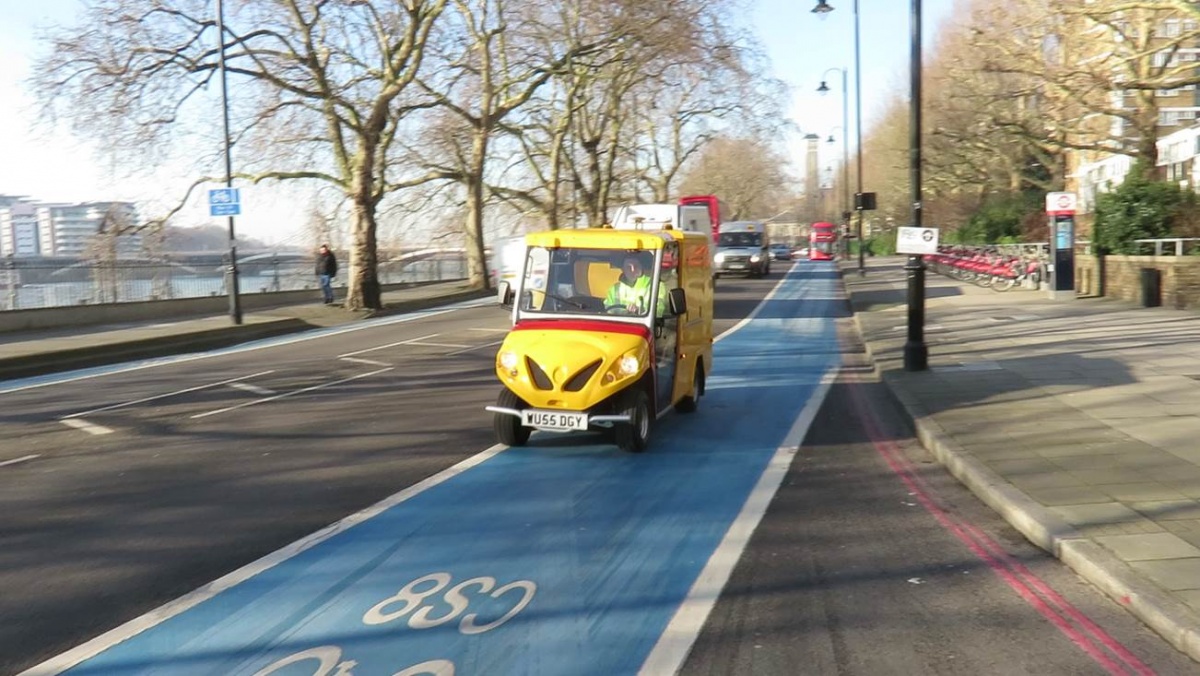Differential grip ‘road hazard’ debate heats up
December 2017
Assistant coroner Russell Caller wrote a further Regulation 28 Report to Prevent Future Deaths following the death of motorcyclist Milan Dokic last year after he lost control on an unsegregated section of cycle superhighway in February 2016. He lost control on an unsegregated section of cycle superhighway in February 2016. He reached a verdict of 'Accidental death contributed by Neglect'.
As Transport Network has previously reported, TfL had not specifically followed earlier recommendations from coroner Dr Fiona Wilcox to address her finding that, while a cycle superhighway may provide road grip that is otherwise adequate, ‘the use of road surfacing with reduced road grip compared to the usual road surface represents a road hazard’.
Leading research body Transport Research Laboratory (TRL) has said it has conducted little research into the issue of differential friction on road surfaces after Transport for London (TfL) said it was not aware of evidence to back a coroner’s suggestion that it represents a road hazard.
In the new Transport Network report Mr Caller wrote: ‘Urgent research should be carried out into the adverse effects of having adjacent areas of road with very different road grip values and, subject to road skid resistance research, remedial response is needed once that research has been carried out.’
In response to this recommendation, TfL told Transport Network: ‘TRL has undertaken significant research in road skid resistance assessment and anti-skid surfacing management. We are not aware of TRL finding anything to indicate that different skid resistances across a lane has a significant impact on vehicles’ ability to brake and manoeuvre on appropriate road grip at normal speeds.
‘The nature of repairs and reinstatements of road surfacing means that materials with different skid resistances are routinely laid across the UK and managed effectively; however we will be raising the coroner’s findings with the UK Roads Board for their consideration.’
Helen Viner, the research body’s chief scientist, infrastructure told, Transport Network: ‘TRL has undertaken significant research in road grip and skid resistance assessments and management; however we have conducted little physical testing in the area of differential friction and road surfacing.
‘When we have reviewed this area in the past there has been a limited amount of literature available. Therefore anti-skid surfacing is an area that is certainly worth further investigation.’
Mr Caller also said that ‘urgent research needs to be carried out on preventing road hazards by having a clear scientific way of determining anti-skid surfacing which can be applied to roadways in London’.
In response, TfL said: ‘We use industry standard SCRIM® and road grip testers across our road network; these techniques are well established in the highway sector and are supported by extensive scientific research. We have amended our skid resistance policy to ensure it fully covers carriageway and segregated cycle routes.’
Leon Daniels, TfL’s managing director of surface transport, said: ‘Our thoughts remain with the family and friends of Milan Dokic.’
W.D.M. Limited has been trying to address the problem by developing a specialist machine to check the safety of cycle ways. The Cyclopath uses tried and tested laser technology to scan the surface of cycle paths to check for rutting, texture depth, changes in the transverse profile and any cracking. It has successfully completed more than six months of trials in the West Country and in London.
Share this





